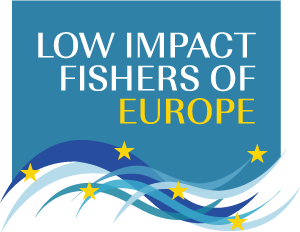The Low Impact Fishers of Europe (LIFE) calls on the Council of Ministers not to institute a closure of all eel fishing in 2022, as recommended in the ICES Advice of November 4 2021. This is not needed; it would be counterproductive and would do more harm than good.
Rather “smart measures” are needed to assure fluvial continuity from source to sea, measures to stop eels being killed by hydro-power plants and industrial water abstraction, and an end to the illegal capture, trade and trafficking of eels.
Any restrictions on eel fishing must be commensurate with the impact of the fishery. Marine catches are estimated to only cause 3% of eel mortality, and marine fisheries have relatively little impact on the biomass of the silver eel or their ability to reach the spawning grounds in the Sargasso Sea.
Any tightening of measures beyond what is already in place would have a profound impact on the viability of the Baltic Sea small-scale fishing fleet.
In the Baltic Sea, small-scale fishers account for over 60% of employment in fishing, and over 90% of the fleet by vessel numbers, with their catches destined for direct human consumption. But they are gasping for air. Increasingly their options are being closed down. Demise of and restricted access to crucial fish stocks – notably cod, herring, and eel – combined with increasing competition from predators such as seals and cormorants, is undermining the viability of their livelihoods.
Fishing for eels provides an important supplementary activity and source of income to small-scale fishers in the Baltic Sea, without which their livelihoods would become non-viable.
There are signs that the European Union’s Eel Regulation (establishing measures for the recovery of the stock of European eel), implemented since 2009 may be working. Since 2011 the dramatic decline in eel populations (90% over a few decades) seems to have been halted, and since 2013 eel restocking programmes are showing some increasing trends. According to Willem X. Dekker, a renowned eel biologist: “We are not sure that the Eel Regulation works, but we know that the expected effect does happen”.
According to DG Mare: “in the Member States having developed a comprehensive eel management plan, the Eel Regulation ((EC) No 1100/2007) has been effective.
For years eel fishers have been engaged in conservation efforts based on catching and transporting eels to stop them getting blocked by dams or damaged by hydropower installations. Europe has 12 million dams – one for dam every 400 metres of water. It is these barriers to eel migration and the damage being done to eel habitats, including the draining of wetlands, that are amongst the principle causes of eel declines.
Marine catches impact marginally on European eel stocks – causing only 3% of the overall mortality. In 2018 DTU Aqua concluded that capture of adult eels in
the marine areas has relatively little impact on the biomass of silver eel. However, predation and other anthropogenic impacts account for nearly 50% of eel mortality. In addition, the larval stages of the European eel are subject to large-scale illegal capture, trafficking and trade, described as Europe’s largest wildlife crime.
This is not to belittle the vulnerable situation of the European eel. The species is listed as critically endangered by the International Union for Nature Conservation (IUCN). The species also appears on CITES Appendix II, and is listed by the Convention on the Conservation for Migratory Species of Wild Animals (CMS). Urgent action is needed to bring the European eel back from the brink.
In 2017, LIFE recommended a 5 point plan, which we stick by today. This includes:
· Introduction of an all-encompassing Catch Documentation Scheme for European eel – for all stages of its life cycle;
· Increase efforts to curb the illicit capture, trade and trafficking of eels
· Facilitate eel migration by enhancing fluvial continuity from source to sea – including through “smart measures” based on eel migratory habits
· Reserve the glass eel fishery for restocking purposes only
Closure of the eel fishery in LIFE’s view would be counterproductive. Controlling and monitoring legal eel fishing and trade effectively would provide scientists and regulators with an important source of information on eel dynamics. It would also help to shine a spotlight and expose illegal eel catching and trade.
According to Andrew Kerr of the Sustainable Eel Group: “if we close the fishery, we will not save the eel. We will open up the rivers to uncontrolled poaching – widespread, widescale and on an incredible basis…”
So, please let’s preserve the fishery, conserve the European eel, and save the small-scale fishers.




